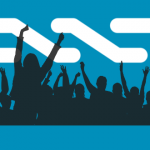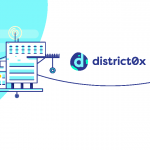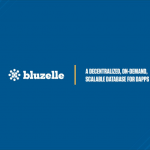Crown (CRW) is a digital commodity and application platform for driving technical & financial innovation. Inspired by the universal symbol of the Crown, the platform seeks to build on durable and time-tested elements of existing institutions while adding new capabilities which have become possible only through the new discoveries and developments of the crypto-currency community.
The project aims to become a global payment, messaging and application platform, enabling developers to build complex new economy applications and offering an efficient low transaction cost platform to store value, register ownership and manage contractual relationships.
Crown includes capabilities of both the DASH and Bitcoin protocols, but there are important differences between Crown and both DASH and Bitcoin. The most important differences from Bitcoin are that (1) Crown confirms transactions more quickly, and (2) has an additional layer of security provided by Tron network Masternodes. The most important difference from DASH is that Crown can be merge-mined with Bitcoin so that it has the capability to leverage the security provided by the bitcoin network’s hash power.
Crown Tron Masternodes.
**Interesting Fact: Recently, When entire crypto market went down to a market cap of $60 billion, Only masternode based coins were performing extraordinary, with providing decent profits even in such a bad time.**
The Crown platform utilizes Masternodes called Trons. To understand what Masternodes are, we must first understand what a node is. The word node has tons of definitions but the one we’re concerned with goes as: “A physical network node is an active electronic device that is attached to a network, and is capable of creating, receiving or transmitting information over a communications channel.”
Oversimplifying, a node is a device, for example – a computer, in a network that is communicating with other devices – computers, in the same network. If a computer is a node, it implies that that computer is part of a specialized computer network. When it comes to cryptocurrencies, Masternodes can be thought of as the computer servers, setup to serve the users of a particular cryptocurrency.
The minimal requirements for running a Tron masternode are to just have a small compute session which is always on and connected to the network, and load the Crown software on it and set some configuration files up with some keys to confirm that you have the required 10,000 CRW collateral on the blockchain.
What is the role of Tron Masternodes?
Tron Masternodes on the Crown network serve to:
- Secure and stabilize the network and transactions.
For those interested in how this works, there are ways that network security can be accomplished using mathematical properties which don’t involve mining algorithms, but functionally leverage randomness and network topology. These techniques are used by a variety of different systems, from WeChat to Zookeeper — just look up the Paxos Algorithm and go from there. The Dash Paxos implementation with InstantX is an elegant example. The network is secured by both the Trons and merge-mining.
- Provide another layer of governance.
Tron operators have the right to vote on development related proposals submitted by the Crown community. This is a very responsible role, since they are directly influencing the future of the Crown project.
- Provide Application Developers and Tron Operators with Business Opportunities.
Trons are, in a sense, franchises to operate a cloud application business running open source applications and accepting payment denominated in CRW. They provide the computing power and network diversity that will run the applications and services in the Crown platform. In return for operating a Tron, the owner is rewarded with a percentage of the block reward.
Why Tron?
Tron is close to the old name for the servers, Throne – but a “Tron” is active and not passive, and “Tron” refers to the history of crypto where Hal Finney was involved with building the Atari game The Adventure of Tron.
The key idea is that Trons are active server nodes on the network. A Tron can generate revenues by confirming transactions on the network – but it will also be able to use the Crown API, alongside other API’s to allow developers to build other businesses as well.
Merge mining.
Crown has a direct relationship with the Bitcoin blockchain itself through merge mining. Merge mining uses a feature called AuxPow (Auxillary Proof of Work) which enables a relationship between two blockchains for one to trust the other’s work as their own and accept AuxPOW blocks.
The benefit of this to Crown is that the Crown network can be secured and benefit from the vast mining infrastructure investment that Bitcoin has enjoyed. The benefit for miners is that it allows them to mine Bitcoin and Crown at the same time with no increased mining costs.
Crown (CRW) Coin.
Overview.
Mining Algorithm: SHA256D.
Block Time: 1 Minute.
Transaction confirmations: 6.
Difficulty Retarget: Every block.
Mining Time: 14 years.
Current coın Value: $1.34.
Market Cap: $20,018,790.
24hr volume: $200,311.
Cırculatıng Supply: 14,944,749 CRW.
Total Supply: 42,000,000 CRW.
(As of 25/8/2017)
How to acquire CRW Coins.
An initial stake in the cryptocurrency can be acquired in two ways: mining or trading. Mined CRW can only be obtained by experts who utilize special equipment and skills. On the other hand, anyone can trade in the cryptocurrency. You can purchase them at CRW exchanges or markets. Alternatively, you can accept them in exchange for services or goods.
How many Crown coins exist?
At the time of writing there are 14,944,749 CRW in circulation with an emission rate of approximately 600 CRW per hour (10 CRW per block). 45% of mined coins are paid to miners, 45% to Throne/Masternode operators for their role in confirming transactions on the network through a modified proof-of-stake algorithm and 10% is set aside as governance fund.
The governance fund is used to fund proposals that in some way add value to the digital currency. It is the primary role of masternode to decide which proposals add real value and which ones do not. The proposals can be submitted by anyone on the chain.
After the masternode has chosen the proposals which show the capability to add real value and promise good returns, the masternode holders vote on them. If a proposal is voted in, they get paid automatically.
Exchanges.
Wallets.
- iOS Wallet.
- Android Wallet.
- Android Throne Monitor.
- iPhone/iPad Throne Monitor.
- Crown Price Ticker Chrome Extension.
Who are the developers?
Currently, Infernoman is leading work on the core. Chaositec is working on architectural principles and Urban Idler is investing his time in the application platform design. A full core team list can be found here: http://crown.tech/our-team
In closing.
The Crown project aims to become an easily accessible and usable platform for commerce, communication and computation. Its developers will seek to eschew the hype around the sector and instead will focus on a platform which focuses on usability and use cases for the end points of the network.
The success of the project will hinge on the ability to provide both a clean and clear user experience for developers, merchants, consumers and Tron operators and an economic incentive, in the form of either lower costs or profitable business niches.
This general use approach to the -tarball- of technologies haphazardly referred to as -‘blockchain’ (which include secure hashing, cloud computing, peer to peer networking, secure key exchange, distributed consensus protocols and compute algorithms, open source code, git, etc…) is a viable infrastructure for the future, and ultimately important as a competing alternative to the current model.
[currencyprice currency1=”CRW” currency2=”usd,eur,btc”]
[currencygraph currency1=”CRW” currency2=”usd”]




















